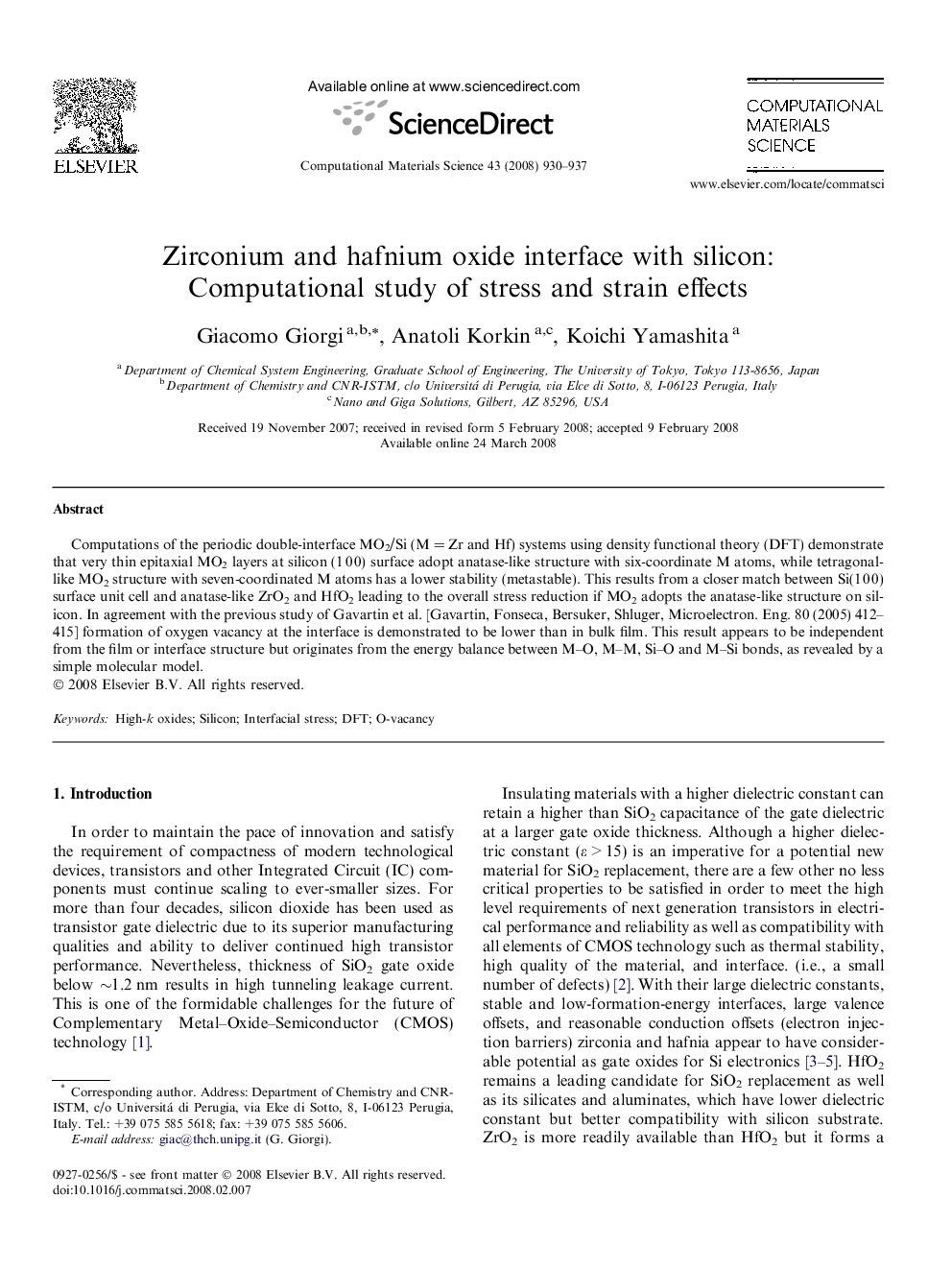| Article ID | Journal | Published Year | Pages | File Type |
|---|---|---|---|---|
| 1563308 | Computational Materials Science | 2008 | 8 Pages |
Abstract
Computations of the periodic double-interface MO2/Si (MÂ =Â Zr and Hf) systems using density functional theory (DFT) demonstrate that very thin epitaxial MO2 layers at silicon (1Â 0Â 0) surface adopt anatase-like structure with six-coordinate M atoms, while tetragonal-like MO2 structure with seven-coordinated M atoms has a lower stability (metastable). This results from a closer match between Si(1Â 0Â 0) surface unit cell and anatase-like ZrO2 and HfO2 leading to the overall stress reduction if MO2 adopts the anatase-like structure on silicon. In agreement with the previous study of Gavartin et al. [Gavartin, Fonseca, Bersuker, Shluger, Microelectron. Eng. 80 (2005) 412-415] formation of oxygen vacancy at the interface is demonstrated to be lower than in bulk film. This result appears to be independent from the film or interface structure but originates from the energy balance between M-O, M-M, Si-O and M-Si bonds, as revealed by a simple molecular model.
Related Topics
Physical Sciences and Engineering
Engineering
Computational Mechanics
Authors
Giacomo Giorgi, Anatoli Korkin, Koichi Yamashita,
